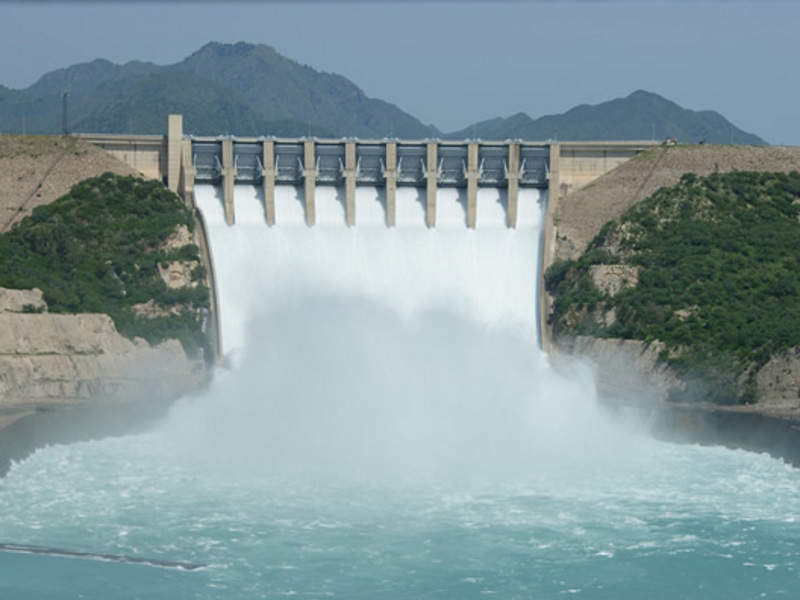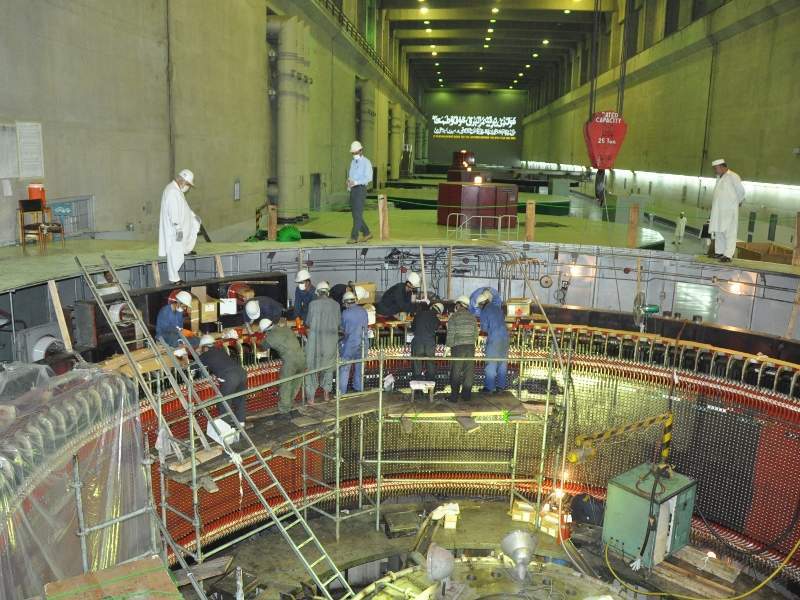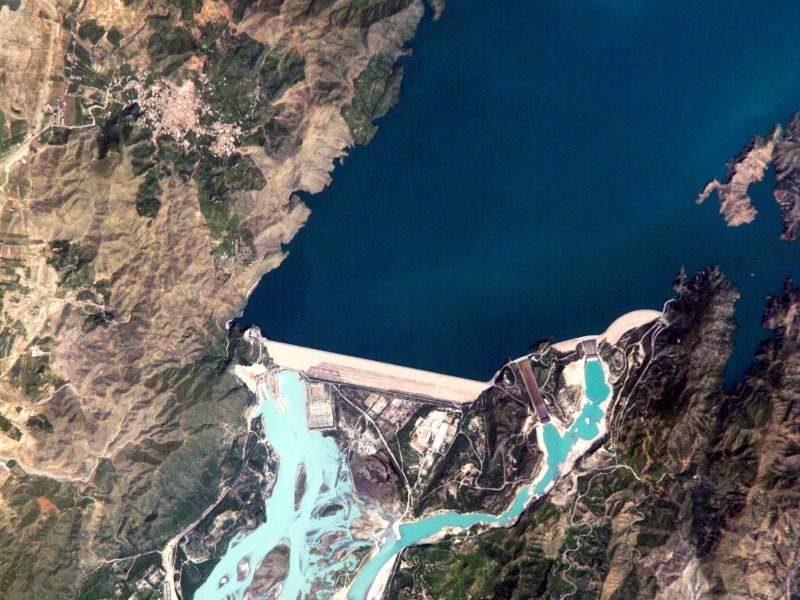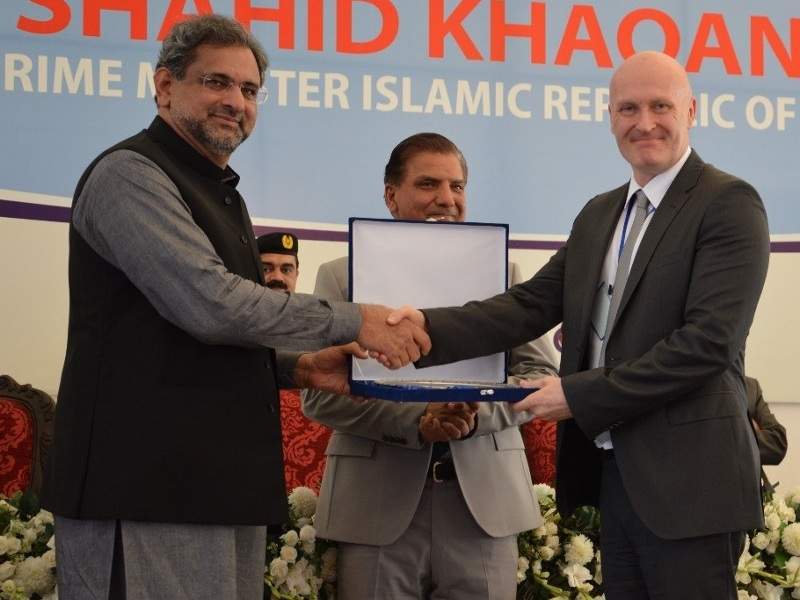Tarbela hydropower plant, located on the Indus River, in Haripur district of Khyber Pakhtunkhwa, Pakistan, is undergoing expansion to increase its installed capacity from 3,478MW to approximately 6,300MW.
Owned and operated by Pakistan’s state-owned Water and Power Development Authority (WAPDA), the Tarbela hydropower plant was originally brought into operation with 700MW capacity in 1977.
The second and third phases of expansion added 2,778MW, bringing the total installed capacity of the plant to 3,478MW by 1992.
The fourth expansion, under-construction since 2013, was partially commissioned in March 2018 and will become fully-operational by the end of 2018, adding 1,410MW capacity.
Project Gallery
-

Pakistan’s Tarbela hydroelectric dam on the Indus River was built in 1977.
-

The Tarbela hydropower station’s installed capacity was increased to 3478MW in 1992. Image courtesy of US Embassy Pakistan.
-

Tarbela Hydropower Plant is owned and operated by Pakistan’s state-owned Water and Power Development Authority (WAPDA).
-

Tarbela is one of the biggest hydropower projects in Pakistan. Image courtesy of NASA Johnson.
-

The first 470MW unit of the 4th extension project at Tarbela was commissioned in March 2018. Image courtesy of Voith Hydro.
Whereas, the fifth extension, expected to break ground in 2019, will add another 1,410MW capacity to the plant by 2022.
The construction costs for Tarbela fourth and fifth expansions are estimated to be $1.6bn and $823.5m, respectively.
Tarbela hydropower expansion project details
The Tarbela 4th extension project includes the installation of three 470MW vertical Francis turbine generator units on Tunnel-4 of the Tarbela dam, which has a discharge capacity of 90,000 cubic feet per second (cusec). Stretching 2.7km on the right abutment of the dam, the Tunnel-4 was earlier used for irrigation purpose.
The Tarbela 5th extension project will also be equipped with three 470MW vertical Francis turbine generator units, and utilise the water flow through the Tunnel-5 of the Tarbela dam. The Tunnel-5, with 80,000cusec discharge capacity, is currently being used as an irrigation tunnel.
Financing for Tarbela hydropower expansion
World Bank provided $840m funding for the construction of Tarbela 4th extension in 2012, while WAPDA invested $74m in the expansion.
The International Bank for Reconstruction and Development (IBRD) provided a loan of $40m, while International Development Association (IDA) provided a $440m credit facility for the 4th extension project.
The Tarbela 5th extension project will be co-financed by World Bank and Asian Infrastructure Investment Bank (AIIB). World Bank will provide a loan of $390m, whereas AIIB will provide a loan of $300m. The co-financing framework agreement for the 5th extension project was signed between the two banks in January 2017.
Contractors involved with the Tarbela hydropower expansion project
China-based Sinohydro Group was awarded the engineering, procurement and construction (EPC) contract worth $90.63m for the civil works of the Tarbela 4th extension project in 2013.
Sinohydro subcontracted CHENGDU Engineering for the design of sluice gate, penstock and other related facilities for the 4th extension project.
Voith Hydro Germany and Voith Hydro China were contracted to provide the turbine generator units along with the electrical and mechanical balance-of-plant systems for the Tarbela 4th extension project, in February 2014.
Tarbela hydropower plant details
The existing Tarbela hydropower facility comprises a 470ft-tall and 9,000ft-long earth and rock-filled dam, and a power house equipped with 14 vertical Francis turbine-generator units, including ten 175MW turbines and four 432MW turbines.
The 81km-long reservoir with a catchment area of 169,600km² provides an annual water flow of 64 million acre-feet (MAF) to the Tarbela dam.
The service spillway for the power plant consists of seven gates of 50ft width and 61ft height. The spillway has a discharge capacity of 650,000cusec.
The water flow through the Tunnel-1 of the Tarbela dam drives four 175MW turbine units, whereas the Tunnel-2 provides water flow to the remaining six 175MW turbines.
The last four 432MW turbines of the plant utilise the Tunnel-3.
The turbine speed for all 175MW generating units of the plant is 136.4 revolutions per minute (rpm), while the 432MW units operate at a speed of 90rpm.
Electricity transmission from the Tarbela hydropower plant
Tarbela hydropower station is connected to the national grid via two 500kV transmission lines connecting the Ghazi Barotha substation, one 500kV line connecting to Rewat, one 500kV line connecting Peshawar, three 220kV transmission lines connected to Burhan, two 220kV lines to Mardan and one 220kV line connecting Islamabad.
Electricity output from the 4th and 5th extension projects will be evacuated through the existing transmission lines.
Contractors associated with Tarbela hydropower project’s previous phases
Hitachi Japan provided the first four 175MW turbines for the plant, while the remaining six 175MW turbines were provided by DEW Canada and DBS Canada.
DBS Canada along with SEW Canada provided the four 432MW turbines used by the plant.
The generator providers for the existing plant were Hitachi Japan, CGE Canada and Siemens Germany.
Jeumont Schneider France, Hitachi Japan, TBEA China, and Ansaldo Italy provided the power transformers for the existing plant.
The construction and heavy civil engineering works for the power plant were awarded to a joint venture (JV) led by Impregilo.
The JV also included Costruzioni generali Farsura, Impresa Astaldi Estero, Compagnie de Constructions Internationales, Compagnie Francaise d’Entreprises, Societe de Construction de Batignolles, Hochtief, Philipp Holzmann, Strabag Bau, Ed Zueblin, C. Baresel, Conrad Zschokke and Losinger.
